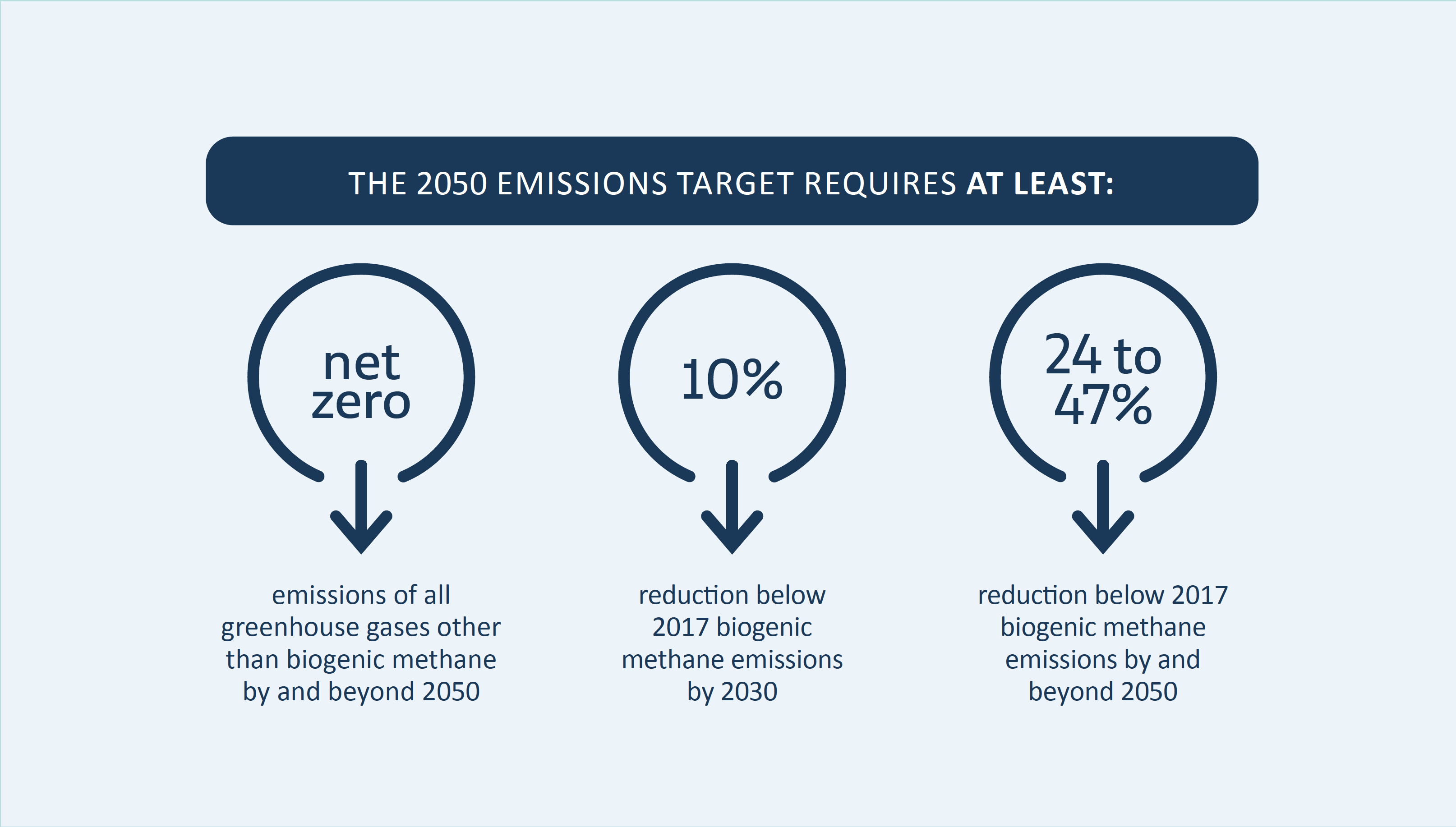FAQs: The 2050 target
Aotearoa New Zealand has a split gas target, with three components.
Aotearoa New Zealand has a ‘split gas’ target for domestic emissions, which considers biogenic methane separately from all other greenhouse gases. This reflects the different impact that methane has compared with other greenhouse gases, such as carbon dioxide.
As such, the target has three components:
The first component is to reduce emissions of greenhouse gases (other than biogenic methane) to net zero or lower, by 2050 and beyond. 'Net' zero means that the Government can decide how to get to the target via a combination of gross reductions (fewer greenhouse gas emissions) and removals (capturing carbon dioxide by natural or artificial means).
The other two components are focused on lowering biogenic methane emissions by:
- at least 10% below 2017 levels, by 2030
- 24–47% below 2017 levels, by 2050 and beyond
These two components are both 'gross' targets rather than net targets. This means efforts need to be focused on reducing the amount of biogenic methane added to the atmosphere.

The three components of the 2050 domestic target.
All of these components are focused on Aotearoa New Zealand's options for contributing to the global effort under the Paris Agreement to limit global average temperature increase to 1.5°C above preindustrial levels.
Under the Climate Change Response Act (the CCRA), emissions need to be reduced to these levels – or lower – by 2050, and then maintained for every year thereafter.
Removals
Net zero refers to a balance between the amount of greenhouse gas produced and the amount removed from the atmosphere in a given period of time.
There may still be gross emissions, for example from aviation. These gross emissions will need to be removed or 'offset' from the atmosphere, for example carbon dioxide being absorbed by trees as they grow or through technology to capture and store carbon, which is still being developed and may not be economically viable.
Biogenic methane
Most methane emissions in Aotearoa New Zealand are 'biogenic'. This means they are produced by living things and processes. Of our methane emissions:
- 91% comes from ruminant animals in agriculture
- 9% comes from organic waste breaking down in landfill